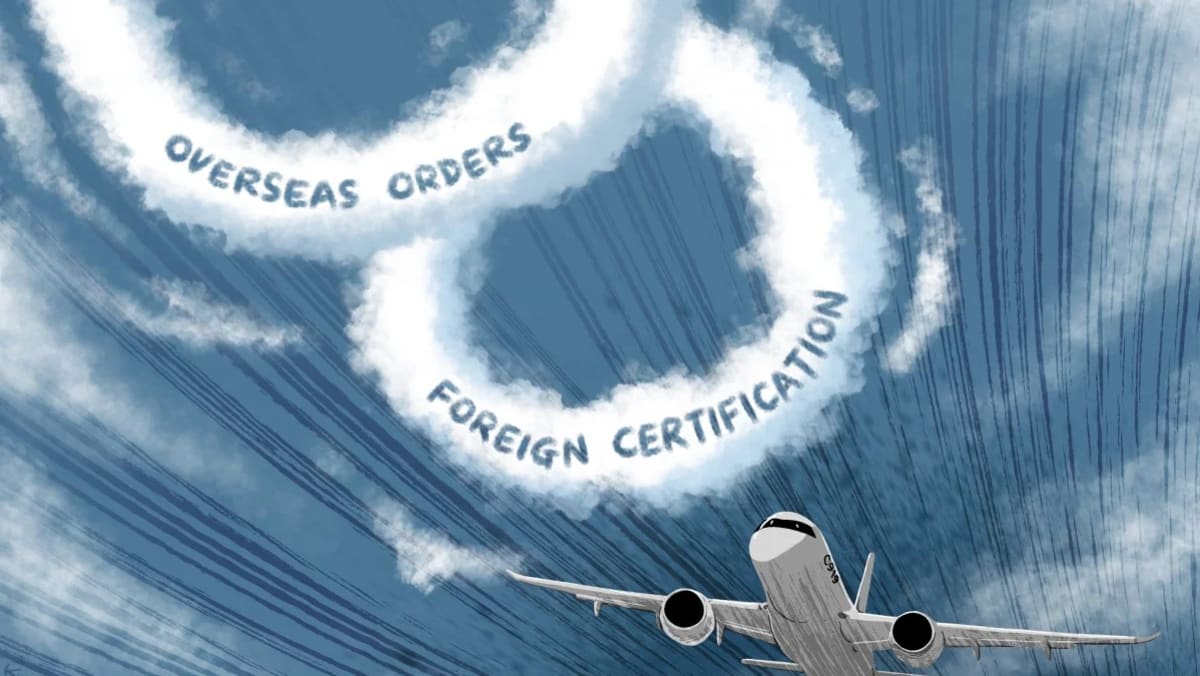Near Shanghai’s Pudong Airport, mainland China’s busiest gateway for international aviation, a husk of a jet sits forlorn on a slope. It has been immobile for years, gathering dust and rust, only able to look on with longing as modern jets – mostly of Western make – roar overhead.
This model of the ill-fated Y-10 – China’s first attempt at a home-grown airliner – has spent far more time on display at the main assembly site of Commercial Aircraft Corp of China (Comac) than it ever did gliding above the clouds.
In its brief life cycle, the Y-10 rode the early ups and downs of China’s aviation industry in the 1970s and 1980s, a volatile period after Beijing first broached the idea of developing a commercial jet. That experiment ended in no purchase orders, with the display model in Shanghai one of only two Y-10s still in existence.
But the story of China’s quest for a home-grown jet continues at the production facility nearby, where units of the C919 – the Y-10’s spiritual descendant – roll off the line. More than 30 years after funding constraints and design flaws clipped the wings of the Y-10, a new generation of airliners is bringing a decades-long ambition into reach.
The single-aisle C919, 15 years in the making, can haul up to 192 passengers for trips of up to 5,555km. With a year of regular commercial flights under its belt since its maiden voyage in May 2023, the plane has burnished China’s credentials as a global player in aviation manufacturing, a position befitting its status as the world’s second-largest market for air travel.
But this auspicious start, from domestic certification to the beginning of commercial operations, is likely to be the easiest leg of a long journey to international relevance.
Many obstacles remain before the C919 and Comac can climb to the same stratospheric success as rivals Airbus and Boeing. Airworthiness certification by foreign authorities and proving the plane’s profitability are the two major milestones yet to be reached, analysts said.
“Comac has a lot of convincing to do,” said Li Hanming, an aviation analyst and founder of a transport consultancy which operates in the United States.
“The best way to showcase the C919’s virtues and viability for the global aviation industry is to let Chinese airlines run it well.”
A DOMESTIC SUCCESS STORY
Aside from some early stumbles, the C919 has had a largely smooth take-off period. The Chinese jet is one year into its commercial run with China Eastern Airlines, with four aircraft flying domestic routes between Shanghai and three major cities. As of early May, the model had carried a cumulative 245,000 passengers on 1,800 flights.
Building on the momentum from the plane’s international debut at the Singapore Airshow in February, the C919 is gearing up for its first commercial flight beyond mainland China: A chartered flight from Hong Kong to Shanghai set for Jun 1.
For Beijing, the C919 is a totemic project, a source of patriotic pride and a demonstration of China’s advancement in technologically advanced research and manufacturing.
It was 10 years ago, almost to the day, when President Xi Jinping toured Comac’s Shanghai headquarters. Sitting in the pilot seat of a model C919 cockpit, he exhorted a scrum of pilots and engineers to do their utmost to craft a modern Chinese jet.
“In the past, some said the best choice for us is to rent [passenger aircraft] from others, and that the last option is to make our own,” Xi said. “But we have reversed this notion.”
The next decade saw more than 100,000 engineers and workers brought together to work on the C919. They came from 36 tertiary institutions and 200 businesses across China, with total investment reaching hundreds of billions of yuan.
Political significance aside, Beijing’s dogged pursuit of its own airliner also makes commercial sense, as it can leverage its enormous market and state capacity to ensure the C919 gets off the ground.
More than one-fifth of the world’s new planes will fly in Chinese airspace between now and 2041, Beijing-based Cinda Securities noted in a report last year. New plane demand from the world’s second-largest economy will hit 9,284 during that time, worth about US$1.47 trillion.
Comac’s own estimates put the country’s demand for narrowbody jets between now and 2041 at 6,288, a supply with a potential US$749.3 billion in value.
Plans are afoot to supercharge production as orders pour in. The nation’s three biggest state-owned carriers – China Eastern, Air China and China Southern Airlines – have already struck deals with Comac for 100 C919s each.














